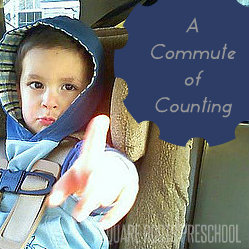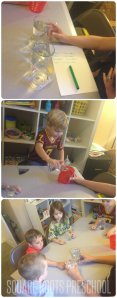Young children love pretending to be adults. They often imitate adult behaviors and jobs and enjoy doing so, so why not put that drive to good use?
Dinner time provides many learning opportunities in which young children can help and feel a sense of empowerment. Provide your preschooler with a paper and pencil and allow him to take the family’s drink orders. This activity will help with pre-writing, memory, and creating a link between the spoken word and written word.
Your child may just scribble something down, may draw a picture, or may write the first letter of the word. Older children can try their hand at spelling out the whole word. You can also make a chart for your child with the words or pictures of the drink options with check boxes.
Next, have your child count how many glasses of each type of drink are needed. Allow him to help pour and serve the beverages.
With practice, your chid will know how to read and write new words and will gain confidence.





